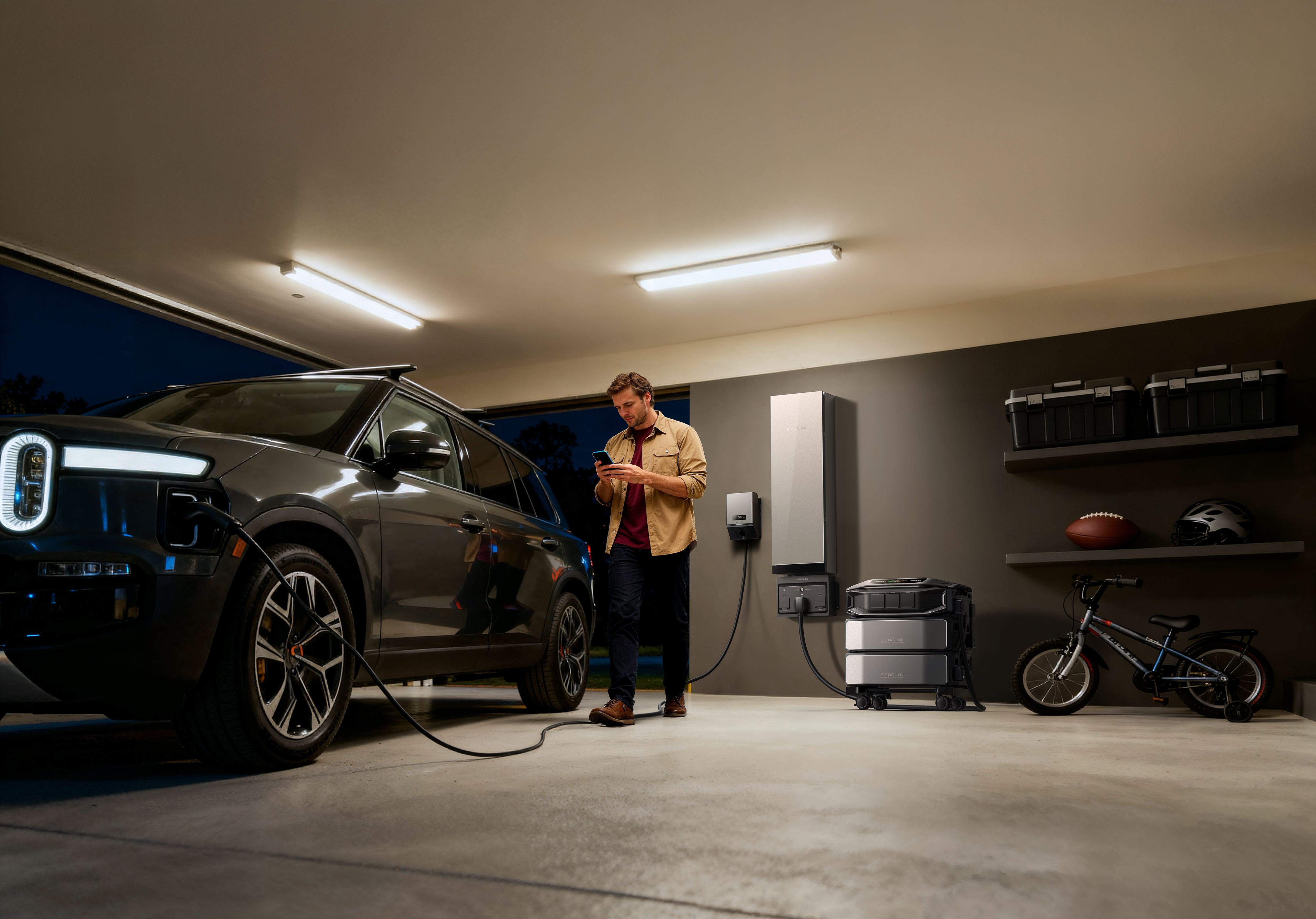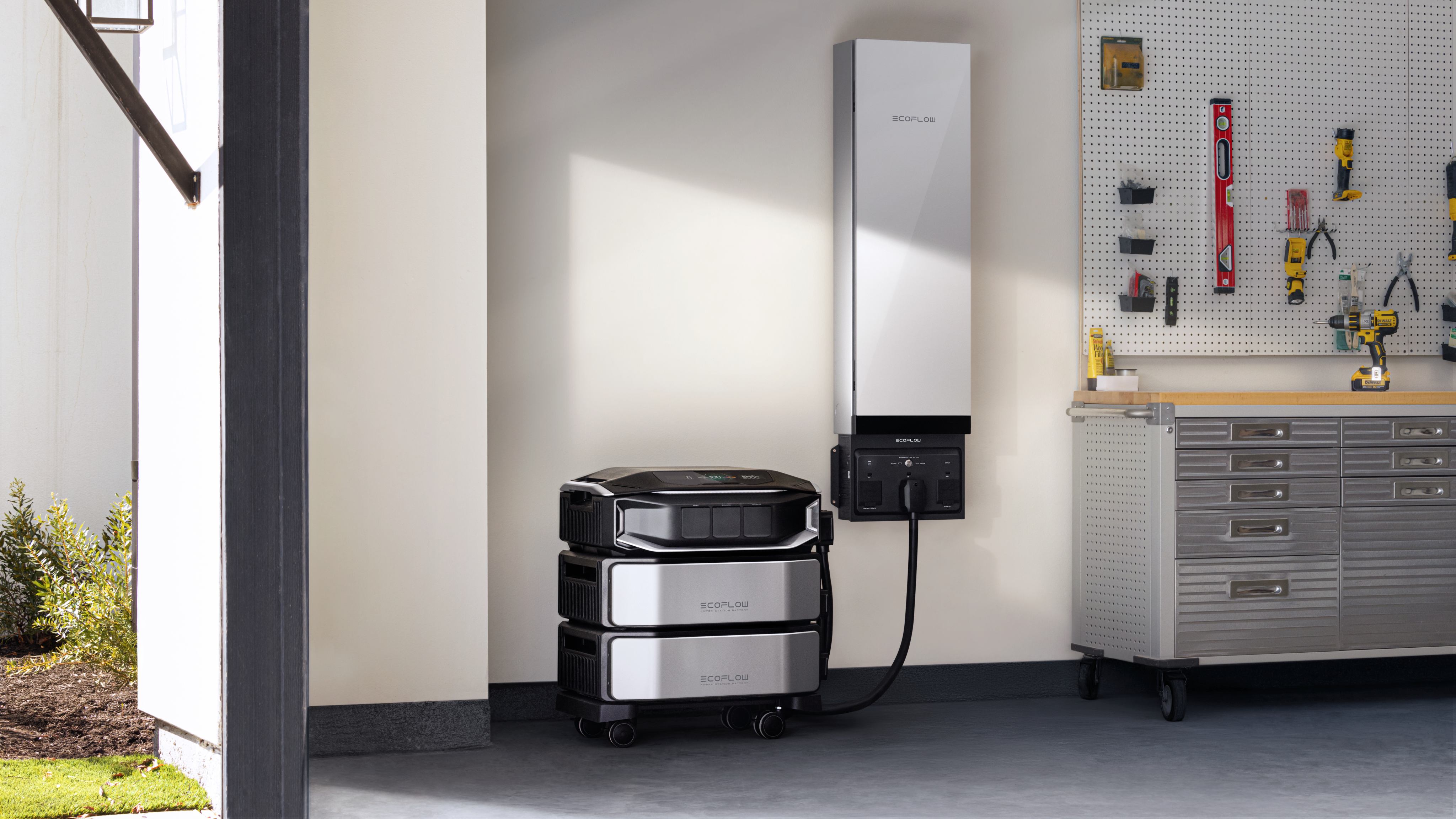- The Two-Way Street of Modern Energy Storage
- What Makes a Bidirectional Charger Different from Regular Battery Systems
- Making Your Home Energy-Smart and Grid-Independent
- Your Electric Vehicle Becomes a Rolling Power Plant
- Getting Your Home Ready for Bidirectional Charging
- The Money Side of Bidirectional Charging
- Environmental Benefits Beyond Your Property Line
- Where Bidirectional Charging Goes from Here
- Making the Switch to Bidirectional Power
Bidirectional Charging 101: Turning Batteries into Power Sources
- The Two-Way Street of Modern Energy Storage
- What Makes a Bidirectional Charger Different from Regular Battery Systems
- Making Your Home Energy-Smart and Grid-Independent
- Your Electric Vehicle Becomes a Rolling Power Plant
- Getting Your Home Ready for Bidirectional Charging
- The Money Side of Bidirectional Charging
- Environmental Benefits Beyond Your Property Line
- Where Bidirectional Charging Goes from Here
- Making the Switch to Bidirectional Power
Your home battery doesn't have to be a one-way street anymore. Technology that lets power move both ways has completely changed the game. Now power can go from the grid to your battery and back again. This change is quietly changing how people in the United States use power. It's turning passive storage systems into active players in our energy ecosystem.
The Two-Way Street of Modern Energy Storage
Traditional battery systems work like a piggy bank—you put energy in, and later you take it out for yourself. Bidirectional charging works more like a community credit union, where your stored energy can benefit you, your neighbors, and even the broader electrical grid.
How It Actually Works
The magic happens through power electronics that act as translators between different types of electricity. Your home runs on AC power, but batteries store DC power. A bidirectional charger speaks both languages fluently, converting back and forth as needed. When the grid has cheap, abundant electricity (usually at night), the system stores it. When power gets expensive or scarce, it sends that stored energy wherever it's needed most.
Smart Decisions Every Second
These systems don't just move power around blindly. They're constantly checking electricity prices, monitoring your home's energy needs, and watching weather forecasts. If a storm's coming, they'll top off your batteries automatically. If tomorrow's forecast shows plenty of sunshine for your solar panels, they might hold off on charging tonight to leave room for that free solar energy.
Real Value for Homeowners
What is bidirectional charging worth to the average homeowner? Most see their electricity bills drop by 20-40% within the first year. During the Texas freeze of 2021, families with these systems kept their lights on and heat running while neighbors went without power for days. Some even earned money by selling power back to the desperate grid at premium rates.
What Makes a Bidirectional Charger Different from Regular Battery Systems
Bidirectional chargers are the "brains" of your energy system, not merely inverters with a fancier moniker.
Core Capabilities
Every bidirectional charger handles the basics of power conversion, but that's where similarities to simple inverters end. These devices monitor dozens of parameters simultaneously: battery temperature, grid frequency, voltage levels, and current flow rates. They adjust output 60 times per second to match grid requirements perfectly, preventing any disruption to sensitive electronics in your home.
Network Intelligence
Modern bidirectional chargers talk to everyone—your utility company, your solar panels, your smart thermostat, even your electric car. They negotiate the best times to charge and discharge based on real-time data from all these sources. When your utility offers $2 per kilowatt-hour for emergency power during a heat wave (compared to the usual 15 cents), your charger knows to participate.
Safety First
These systems include multiple layers of protection that traditional battery setups lack. If they detect any anomaly—overheating, ground faults, frequency irregularities—they disconnect instantly. During Hurricane Ian, several homes in Florida had electrical fires from flooded equipment, but every home with a quality bidirectional system stayed safe because the chargers detected the problems and shut down automatically.
Learning Your Habits
After a few weeks, your bidirectional charger knows your routine better than you do. It learns that you make coffee at 6:30 AM, run the dishwasher after dinner, and charge your phone overnight. Using this knowledge, it pre-positions energy to meet your needs while still maximizing savings.


Making Your Home Energy-Smart and Grid-Independent
Installing bidirectional charging transforms your relationship with electricity from dependent consumer to active manager.
Solar Power Done Right
Solar panels produce the most power around noon, but most families need electricity in the morning and evening. Without storage, that mismatch means selling cheap midday power to the utility and buying expensive evening power back. Bidirectional systems fix this completely. Your batteries soak up all that noon sunshine and release it when you're actually home to use it.
Blackout Insurance
When the grid fails, most solar systems shut down for safety reasons—even on sunny days. But homes with bidirectional charging switch to island mode automatically. Your refrigerator keeps humming, your Wi-Fi stays online, and your lights never flicker. After Hurricane Ida hit Louisiana, some neighborhoods went three weeks without grid power. Families with bidirectional systems lived normally while their neighbors evacuated or suffered in the heat.
Bill Reduction Strategies
Peak shaving sounds technical, but it's simple in practice. Your utility charges extra when you use lots of power at once—like running your AC, pool pump, and electric dryer simultaneously on a hot afternoon. Your bidirectional system sees this spike coming and supplements grid power with battery power, keeping you below expensive demand thresholds. One Phoenix family cut their summer electric bills from $800 to $300 just through automated peak shaving.
Smooth Power Delivery
Voltage sags and spikes damage electronics over time. They're why your computer needs a surge protector and why LED bulbs burn out prematurely. Bidirectional systems condition your power continuously, delivering steady, clean electricity that extends the life of everything plugged into your walls.
Your Electric Vehicle Becomes a Rolling Power Plant
That expensive battery sitting in your garage (attached to four wheels) can do more than just drive you to work.
Home Backup on Wheels
Most electric vehicles carry 60-100 kWh of battery capacity. Your house probably uses 30 kWh per day. Do the math—your car could run your home for two or three days without breaking a sweat. During California's planned power shutoffs, bidirectional charging EV owners kept their homes running normally kept their homes running normally. Their neighbors bought generators; they just plugged in their cars.


Emergency Flexibility
When you have to leave your home, the fixed batteries stay put, but your EV goes with you. If the smoke from wildfires makes your area unsafe to live in, you can drive to a hotel and still have your own backup power. Some families even use their EVs to power camping gear, which turns any campsite into a powered basecamp with lights, fridges, and charge ports for electronics.
Grid Support Revenue
Grid stability services cost a lot of money to utilities. The grid has a hard time keeping up when everyone turns up their AC in the afternoon. Your EV that is plugged in can help keep things stable for a few minutes, which can earn you $50 to $100 per event. In some places, EV owners can make $500 to $1,000 a year just by leaving their cars stopped and letting them charge the grid.
Fleet Economics
School districts have discovered a goldmine. Their buses sit idle all summer when electricity demand peaks. By installing bidirectional chargers, districts earn thousands per bus annually by providing grid support during summer heat waves. The buses charge cheaply overnight and discharge profitably during afternoon peaks, turning a depreciating asset into a revenue generator.
Getting Your Home Ready for Bidirectional Charging
Success with bidirectional charging starts with proper preparation and realistic expectations.
Electrical Panel Updates
Your home's electrical panel probably wasn't designed for two-way power flow. Most installations require adding a critical loads subpanel and installing proper disconnect switches. A licensed electrician can usually complete these upgrades in a day, but costs vary from $1,500 to $5,000 depending on your existing setup.
Choosing Compatible Batteries
Not all batteries play well with bidirectional systems. Older lead-acid batteries lack the communication protocols needed for smart operation. You want lithium iron phosphate (LFP) batteries—they're safer, last longer, and handle daily cycling better than other chemistries. They cost more upfront but deliver better value over their 10-15 year lifespan.
Smart Meter Requirements
Your utility needs to track power flowing both directions for proper billing. Most areas require upgrading to a net meter, which your utility typically provides free. The installation appointment takes about an hour, and you'll lose power briefly during the switchover.
Permits and Paperwork
Every jurisdiction has different requirements, but expect to file for an electrical permit and a grid interconnection agreement. Your installer should handle this paperwork, but the approval process can take anywhere from two weeks to three months. California fast-tracks these applications; other states move more slowly.
Some manufacturers now offer simplified solutions—the Delta Pro Ultra X, for instance, uses a plug-and-play design that cuts installation time from days to hours, though you'll still need proper permits.
The Money Side of Bidirectional Charging
The financial benefits stack up quickly when you run the numbers properly.
Daily Arbitrage
Electricity prices vary dramatically throughout the day. In California, overnight power costs 15 cents per kWh while afternoon rates hit 50 cents. Store 20 kWh overnight (costing $3) and use it in the afternoon (saving $10), and you're ahead $7 daily. That's over $2,500 annually from time-shifting alone.
Avoiding Demand Charges
Many utilities bill commercial customers based on their highest 15-minute power usage each month. One manufacturer in Ohio hit 500 kW during a production surge, triggering $8,000 in demand charges. After installing bidirectional charging, they capped grid draw at 300 kW, saving $4,000 monthly.
Utility Program Participation
Grid operators pay for various services that batteries provide well. Frequency regulation (keeping the grid at exactly 60 Hz) pays $30-40 per kW per month. A 10 kW system earns $300-400 monthly just by making tiny adjustments up and down. You won't notice these small changes, but the grid operator values them highly.
Complete ROI Picture
Initial investment runs $15,000-25,000 for a typical residential system. Federal tax credits cover 30%, and many states offer additional incentives. Between bill savings, grid services revenue, and backup power value, most homeowners see payback in 4-6 years. After that, it's pure profit for another decade or more.


Environmental Benefits Beyond Your Property Line
Bidirectional charging does more for the environment than just reducing your carbon footprint.
Renewable Energy Support
Wind and solar generation doesn't match consumption patterns. Wind peaks at night when demand is low. Solar peaks midday when many homes sit empty. Without storage, this clean energy gets wasted. Bidirectional systems capture excess renewable generation and release it when needed, making every wind turbine and solar panel more valuable.
Killing Peaker Plants
The dirtiest power plants only run during peak demand—usually hot afternoons when everyone's running AC. These "peaker plants" burn oil or inefficient natural gas turbines, producing twice the emissions of regular power plants. When thousands of batteries discharge during peaks, these dirty plants stay offline.
Transmission Efficiency
Moving electricity long distances wastes 8-15% as heat in the wires. Storing and using power locally eliminates these transmission losses. If every home had bidirectional charging, we'd need fewer power plants even without reducing consumption.
Extended Battery Life
Smart charging algorithms baby your batteries, avoiding the extremes that cause degradation. Instead of charging to 100% and draining to zero, bidirectional systems keep batteries in their comfort zone (20-80%), doubling their lifespan compared to simple backup systems.
Where Bidirectional Charging Goes from Here
The technology keeps advancing, and what seems futuristic today will be standard tomorrow.
Artificial Intelligence
Current systems use simple rules and thresholds. Next-generation AI will predict your needs days in advance, automatically preparing for unusual events. Having guests for Thanksgiving? Your system will ensure extra capacity for cooking. Heat wave forecast? It'll pre-cool your house overnight when the power is cheap.
Wireless Power Transfer
Park your car over a charging pad, and power flows automatically—no plugs needed. These systems already exist in labs, achieving 95% efficiency at 11 kW power levels. Within five years, every parking spot could be a charging station and grid connection point.
Neighborhood Trading
With blockchain technology, friends will be able to trade energy directly with each other. You could send your extra solar power straight to the house next door, and they would pay you right away. Peer-to-peer energy sharing means there is no power company in the middle and no transmission loss.
Resilient Communities
Entire neighborhoods will share energy resources through interconnected bidirectional systems. When one section loses grid power, surrounding areas automatically support it. These community microgrids already exist in a few places—Sonoma County installed one after devastating wildfires, and it's kept the lights on through multiple grid failures since.
Making the Switch to Bidirectional Power
The idea of bidirectional charging has grown from a trial to a real-world situation. Homeowners who use solar panels support grid stability and environmental goals while also getting peace of mind and saving money. Modern systems, like the Delta Pro Ultra X, have made it so easy to setup and use that any homeowner who wants to can do it. As the cost of energy goes up and extreme weather happens more often, bidirectional charging is a solution that keeps your family safe and comfortable and pays for itself. Instead of asking if you should use this technology, ask how soon you would like to begin saving money and become energy independent.